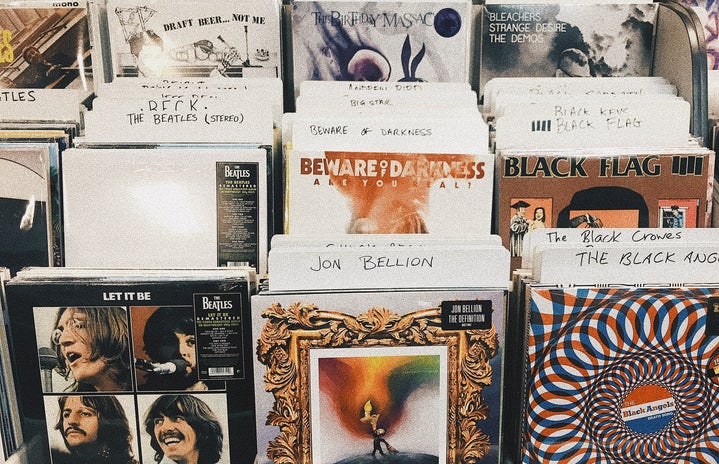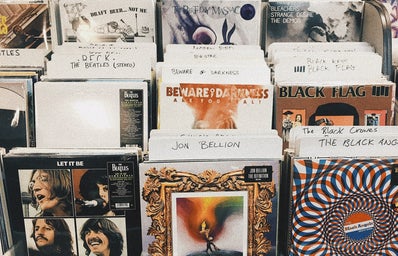I am particularly susceptible to the vintage-esque: of old record stores saturated in memories that aren’t my own, and entertainment set in the decades long before the time of smartphones and unmonitored internet access. My music choice of late has been leaning toward the likes of David Bowie and The Cure, and though I’ve never been a Coca Cola girl, if they released a commercial tomorrow featuring a spicy 80s track, I’m sure I’d suddenly get the craving for a cold can of the carbonated beverage.
This is exactly how nostalgia marketing works. It’s all about connecting to positive and familiar concepts to build a sense of “understanding” between a brand and its customers. “Nostalgia strengthens feelings of social connectedness and lowers financial distress” a study from Grenoble École de Management in France states, “when people have higher levels of social connectedness … their ability to prioritize and keep control over their money becomes less pressing.”
The nostalgia tactic isn’t exclusive to consumables, but also extends to content such as film and television, amongst the other entertainment media we may ingest on the daily. It’s one of the functioning aspects of many popular programs and movies, and essential to That ‘70s Show and its successor That ‘90s Show.
Depicting the lowkey lives of Wisconsin high schoolers, That ‘70s Show is the best kind of program for when you wish to take a trip back in time to the era of bell bottoms and Led Zeppelin, of disco clubs and the beginning of the Star Wars franchise. What makes it stand out from just another nostalgia grab is its eclectic set of characters that include leading male Eric Forman, his band of misfits, and surprisingly enough, his parents (who just so happen to be the best part of the entire show).
Audiences grew to love That ‘70s Show during its original broadcast, not only for it being a blast from the past, but for the cast’s chemistry and the hilarious lines that highlighted such. Now, after 25 years since its original premiere, Netflix is trying to emulate its quiet fame.
Set in 1995, That ‘90s Show attempts to lure in old and new fans with a fresh set of teens occupying the long abandoned basement of Red and Kitty Forman (Eric’s parents). Leia, as the youngest Forman, acts as the quasi-leader of the group and is set to take up the mantle her father once precariously handled. The potential is there, but the execution lacks vision.
The new series aims to recreate more so than make something new from the established bones, meaning that the characters are essentially the same and the scenarios are familiar. That ‘90s Show relies so heavily on Red and Kitty as regulars, and the consistent cameos from alumni, that any semblance of a fresh take gets lost in the series’ need to connect with the viewers of its predecessor.
That ‘90s Show is trying to exist off not only the nostalgia of the grunge aesthetic and the rise of boy bands, but also the existing nostalgia of That ‘70s Show and its own cast of characters. Though it’s a treat to see fan favourites like Red and Kitty, and finding out that Eric and Donna really did get together in the end, these little moments are interrupted by awkward performances of preset stand-ins such as the new Kelso, and the Hyde-like proclivities of Gwen.
This isn’t to say that the spinoff is all bad, but rather that Netflix isn’t allowing it to walk out into the world on its own, instead packaging it up inside a nice layer of That ‘70s Show bubble wrap just to guarantee it’ll even be watched. Nostalgia doesn’t work in its favour here, instead it pits the newer cast against something that is already known and loved by an entire fanbase. What needs to happen is a separation, enough distancing that allows the characters to grow further away from expected predilections. That ‘90s Show can still exist as a spinoff, while also becoming something new, something not rooted entirely in the hype of all that came before it.
The ‘90s saw the end of the decades-long Cold War, the rise of hip-hop/rap, the debut of iconic sitcoms, gay rights moving to the forefront of political conversations, and so much more. There is a whole decade of innovation to work with, but That ‘90s Show is stuck in between the Forman legacy and surface level pop culture references. Nostalgia marketing doesn’t work in their favour. Instead it lumps the entire show in with the other nostalgia grabs, to the point where most of the authenticity is lost.
If it gets renewed, I hope to see the characters step away from the That ‘70s Show archetypes and come into their own, while also maintaining a similar camaraderie like the alumni cast. And if it gets cancelled before its much needed growth, well then it would be a shame to visit Point Place, Wisconsin again just to have to leave after only a 10 episode run.


